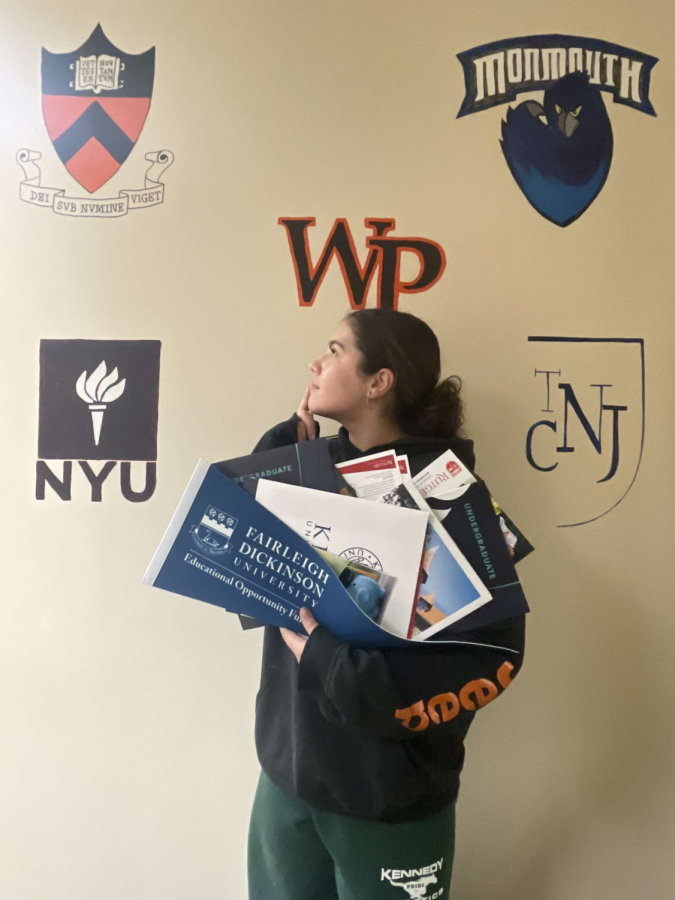Has Students Extraneous Efforts Been for Nothing?
The Rapid Decline in Undergraduate Decisions
Shannon Kavaja, Vishwa Patel, Jedidiah Perez
While rising seniors receive loads of college spam that seem welcoming, many don’t guarantee admission for these students, leaving letters from college institutions to feel forced.
March 23, 2023
The COVID-19 pandemic has brought unprecedented disruption to every aspect of life, and higher education is no exception. As universities across the world closed their doors to students in response to COVID-19, many high school seniors saw their dreams of attending college slip further out of reach.
Recently, many rising graduates were hopeful for admissions with the help of a test-optional policy for standardized testing. Instead, ambition-filled students are colliding with a rapid decrease in college acceptances due to an abundance of applicants, the most in history, leaving many students uncertain about their futures. This was supposed to be a good thing.
According to a report by the National Student Clearinghouse Research Center, college enrollment in the US fell by 3.5% in the fall of 2020, with community colleges taking the biggest hit, with a 9.4% drop in enrollment. This drop is particularly concerning, as community colleges are often a more accessible and affordable option for students who may not have the resources to attend a four-year university.
This is now consequently creating a domino effect on popular state, public and private universities. On the University of Maryland’s student infographic page, they stated that for the fall class of 2022, they faced 56,000 applicants for a class size of roughly 4,500. This was a school that before COVID-19, had an acceptance rate of about 51% for the 2019-20 admissions term.
Statistics such as these lead many students to underrate their own efforts as they are left unredeemed, continuously getting rejected from schools that were considered “safe” due to such a large quantity of qualified applicants.
Roadblocks after admission
Financial challenges for college students and their families have magnified as well, including increased tuition and fees, decreased financial aid, reduced job opportunities and unexpected expenses related to remote learning. This especially proves as a threat to low-income and minority students who experience a large disproportionate impact in terms of financial and logistical barriers. It doesn’t calm these individuals either that this unusual pattern of application abundance can be described as almost lottery-like draft picks during admission season.
“I do think that college applications have become more of a draining task, especially since the payoff isn’t anything like it used to be,” Sidney De Voogd, a senior from John F. Kennedy Memorial High School in Iselin, New Jersey stated. “I remember my sisters waiting by the mail for their letters and that sense of build-up and excitement, and I think that technological forms of congratulations were the first aspect that diminished the enjoyment of the process. In terms of the whole thing being a lottery, I believe there is some truth to that. Everyone rambles to be a part of every club, and every organization, whether they enjoy them or not, and it makes barely anything seem as impressive as it used to be. It’s almost as if everyone is becoming replicas of one another.”
A survey conducted by the Strada Education Network found that low-income students were significantly more likely to change their postsecondary plans as a result of the pandemic, with 29% of respondents reporting that they had decided to delay enrollment or not attend college at all.
Considering the significant future impact on our economy and workforce, the decline in college acceptances is worrying. By 2020, 65% of all employment required some kind of postsecondary education, according to a Georgetown University Center for Education and the Workforce report, making it more imperative for students to have access to top-notch higher education.
Collegiate education has now become a pathway that is desired by many, needed by many and given to fewer than ever.
How do we make a change?
Prioritizing student needs and making investments in the future of higher education is now as crucial as ever as we continue to manage the current challenges of the COVID-19 epidemic. As a nation, we need to deal with the structural problems that have made a college degree more and more out of reach and expensive for many Americans nationally. At the moment, we can only assure the opportunity that allows every student to get the chance to follow their aspirations and realize their full potential by working collaboratively on this issue.

